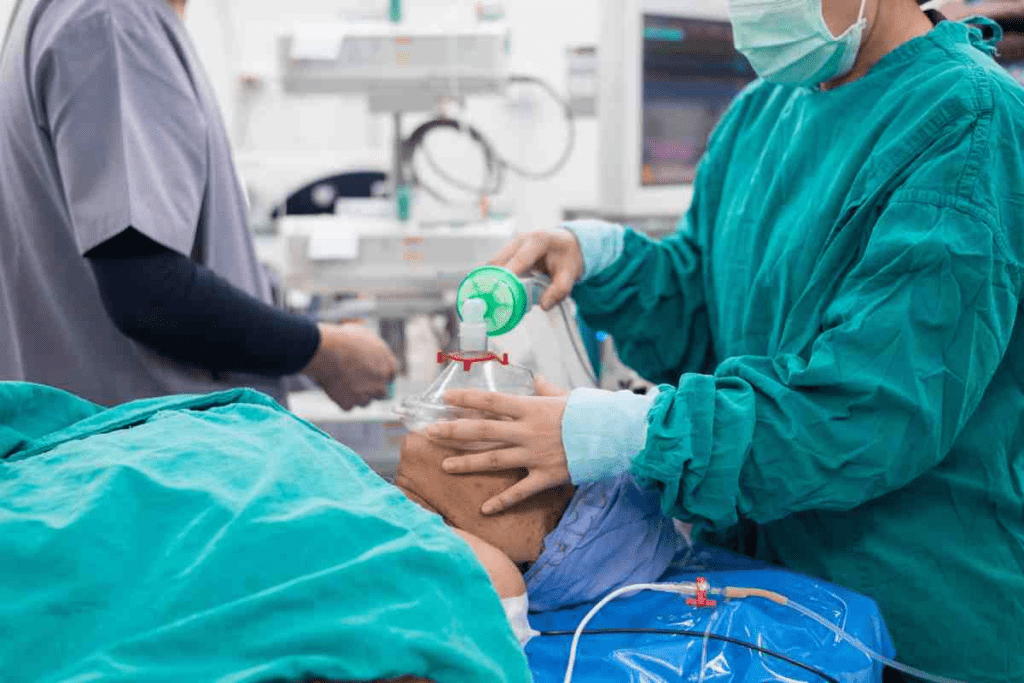Last Updated on November 14, 2025 by
At our institution, we know surgery can be scary. That’s why we focus on your safety and care first. Level3 surgery includes complex procedures that need skilled surgeons and a full support team.

ADH levels dropThese surgeries often need deep sedation or general anesthesia. They are for patients who are not very sick before surgery,may vary from diffrent levels like ASA I or II. Examples of Level 3 surgeries are hysterectomy, myomectomy, cholecystectomy, laminectomy, hip/knee replacement, and major laparoscopic procedures. Knowing about Level3 surgery helps patients prepare and understand what’s coming.

The American healthcare system sorts surgeries into levels based on how invasive they are and the risks they carry. Knowing these levels helps figure out the right care and resources needed for each surgery.
In the U.S., surgeries are sorted by how complex they are, how much blood might be lost, and the risk to the patient. The American Society of Anesthesiologists (ASA) sets the standards for sedation and anesthesia levels. Surgeries are usually divided into five levels, with Level 1 being the least invasive and Level 5 the most invasive.
This sorting helps doctors in many ways:
Level 1, 2, and 3 surgeries vary a lot in complexity and resources needed. Level 1 surgeries are small and low-risk, often done with local anesthesia. Level 2 surgeries are a bit more complex and might need sedation or regional anesthesia. Level 3 surgeries are very invasive, need deep sedation or general anesthesia, and carry more risk.
Here’s a quick look at the differences:

The level of a surgery is tied to the abilities of trauma centers. Higher-level trauma centers can handle more complex and risky surgeries. For example, a Level 3 surgery is usually done in a place with the skills and resources for big surgeries and possible complications.
Trauma centers are checked on how well they care for injured patients. Level I is the highest level. The check includes looking at their surgical abilities, among other things.
It’s key to understand the different surgical levels and their link to trauma centers for the right care. By looking at these levels, we can see the details of each and what’s needed for Level 3 surgeries.
Understanding Level 3 surgery is key for healthcare providers to ensure top patient care. These surgeries are complex and need special care to keep patients safe and healthy.
Level 3 surgeries need advanced anesthesia, like deep sedation, general anesthesia, or regional blocks. These help manage pain and discomfort during surgery. The right anesthesia depends on the patient’s health, the surgery type, and the anesthesiologist’s expertise.
General anesthesia is used when patients need to be completely asleep. Regional blocks are better for surgeries that only need a certain area numbed. The trauma center levels help decide the best anesthesia.
Choosing the right patients for Level 3 surgeries is very important. Patients classified as ASA I or II are usually good candidates. ASA I patients are healthy, and ASA II patients have mild disease.
We check each patient’s health, medical history, and current condition to see if they’re right for Level 3 surgery. This careful selection helps avoid risks and ensures good outcomes.
Level 3 surgeries are complex and require advanced techniques. They vary by specialty, like orthopedic, neurosurgical, or cardiovascular.
Examples include complex reconstructions, major organ surgeries, and procedures needing a lot of care after surgery. These surgeries often require deep sedation or general anesthesia. This shows the need for a skilled team and the right facilities.
The success of Level 3 surgeries depends on the medical team’s skill and the facility’s standards. We make sure our medical staff is well-trained and meets high standards.
Our team includes skilled professionals who are board-certified and have advanced life-support training. Maintaining these qualifications is mandatory for top-notch care. We focus on keeping our staff’s training and certification up to date.
To join our team, surgeons and anesthesiologists need the right qualifications and experience. Our staff is committed to staying current with medical guidelines and practices.
The facilities for Level 3 surgeries have the right equipment and technology. Our facilities are designed to provide a safe and comfortable environment for our patients.
We meet strict facility standards, including ICU capabilities and emergency protocols.
Our facilities are regularly checked to ensure they meet regulatory guidelines.
We follow regulatory guidelines that require practitioners to stay updated and maintain certifications. Board certification is a critical requirement for our medical staff. We ensure our staff meets these requirements.
Our institution is dedicated to the highest standards of medical practice, following the American cancellation policy and trauma code regulations.
ICU capabilities are key for handling complications during or after Level 3 surgeries. Our facilities are equipped to provide immediate care in emergencies.
We have strong emergency protocols in place. This ensures our patients get timely and effective care in emergencies. This includes a trauma code system.
The safety and success of Level3 surgeries in U.S. centers are key to quality care. At LivHospital, we aim for world-class healthcare. Our results show we’re on the right track.
Ambulatory centers in the U.S. doing Level 3 surgeries have complication rates under 1%. This shows the growth in surgical care and our team’s skill. It also highlights the need for strict safety rules.
Our data shows that low complication rates come from careful patient choice, top-notch anesthesia, and detailed post-op care. Keeping these standards high helps us keep improving patient results.
Good monitoring is key during and after Level 3 surgeries. We use advanced systems to watch patients’ vital signs live. This lets us act fast if problems come up.
After surgery, we keep a close eye on patients for any signs of trouble. Our team works hard to make sure patients recover well.
At LivHospital, we follow global best practices in surgery. Our team keeps up with new research and guidelines. We use this knowledge to make care safer and better for patients.
We work together with many specialists to make sure patients get the best care. This teamwork helps us achieve our high success rates.
Research shows both hospitals and outpatient centers can have great success with Level 3 surgeries. But the choice depends on the patient’s health and the surgery’s complexity.
Outpatient settings might offer lower costs and fewer infections. But choosing the right patient for outpatient surgery is key. We carefully pick who’s best for outpatient care to ensure the best results.
Level 3 surgery is a big part of today’s healthcare. It involves complex procedures that need a lot of skill and care. We’ve looked at what makes these surgeries special, like the need for expert staff and careful monitoring.
In places like ICUs, knowing what ICU means is key for taking good care of patients. This knowledge helps a lot in keeping patients safe and healthy.
At our place, we’re all about giving top-notch healthcare. We focus on keeping patients safe and using the best methods to help them get better. This is true for all our patients, no matter what surgery they’re having.
Learning about Level 3 surgery helps us see the hard work and skill that goes into making patients better. It shows how important it is to care for patients well and keep them safe.
Level3 surgery includes complex procedures. They need skilled surgeons and a full support team. Often, deep sedation or general anesthesia is used.
Patients with ASA I and II classifications are usually chosen. This means they have a low risk before surgery.
Deep sedation, general anesthesia, and regional blocks are used. They ensure patient comfort and safety.
Facilities must meet strict standards. They need ICU capabilities and emergency protocols.
In many American ambulatory settings, complication rates are below 1%. This shows these surgeries can be safe with the right protocols.
Knowing the link between surgical levels and trauma centers is key. It helps decide the right care and resources for each procedure. Level 3 surgeries are moderate to significantly invasive.
ICU stands for Intensive Care Unit. It’s a key part of the facilities for Level 3 surgeries. It provides close monitoring and care for patients.
In medicine, “143” is sometimes linked to “I love you.” But in medical terms, it doesn’t directly relate to Level 3 surgeries or ICU. It might mean “I trust you” or other phrases, but its meaning can vary.
“:3” is not a standard medical term. It’s often used in informal chats to show a smiling face or other emotive expressions.
ED stands for Emergency Department. It’s a key area in hospitals for immediate care of acute injuries or conditions. It’s related to the emergency protocols for Level 3 surgeries.
The American cancellation policy for surgeries varies. It depends on the institution and specific circumstances. Hospitals and surgical centers have their own policies on cancellations and rescheduling.
Subscribe to our e-newsletter to stay informed about the latest innovations in the world of health and exclusive offers!